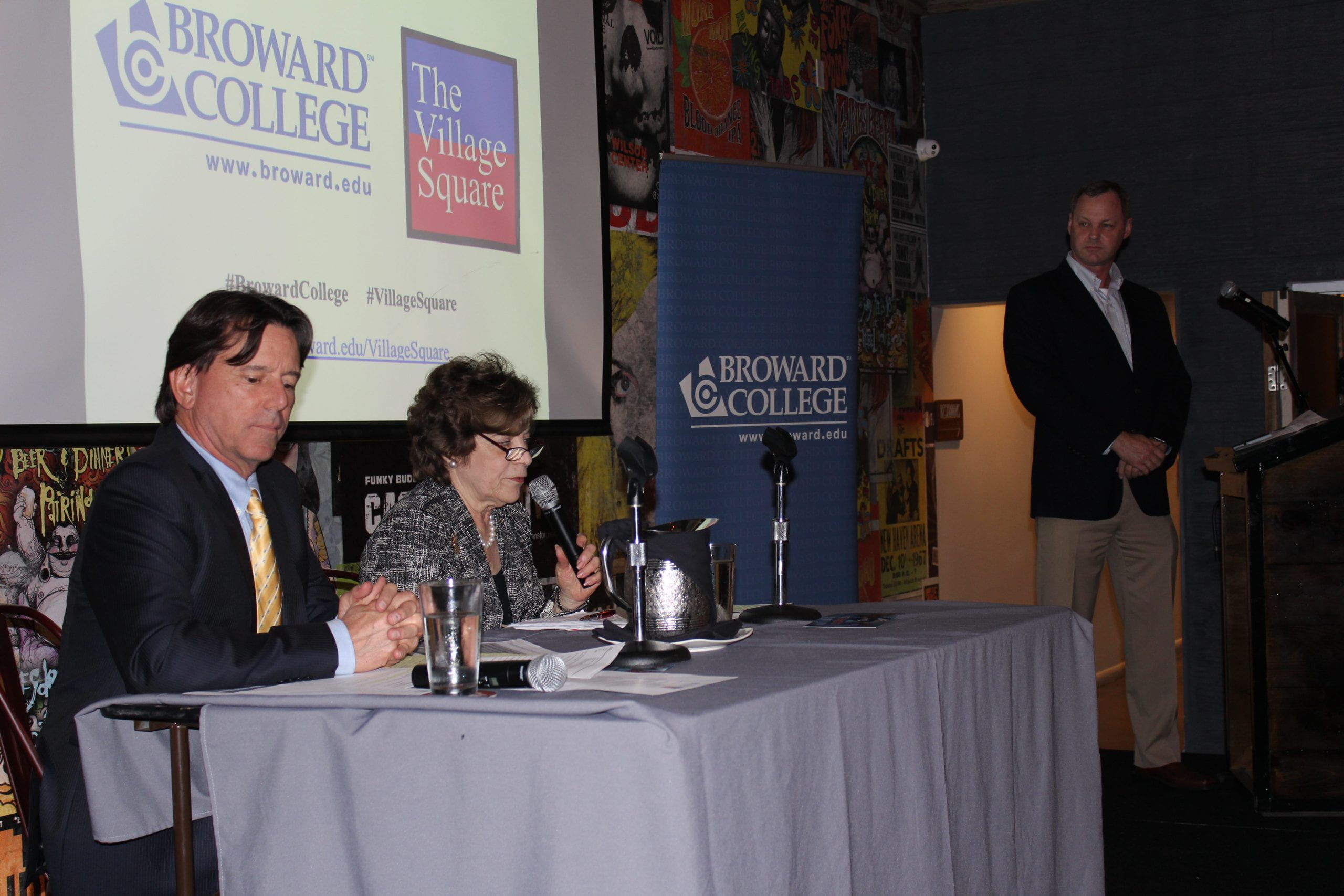Sara Varela
Editor-in-chief
South Florida leads the nation in the wage-to-housing discrepancy gap. The Village Square, in its first 2017 Dinner at the Square, explored the South Florida housing crisis.
More than half of the workforce in South Florida can’t afford their rent and pay over 30 percent of their income in housing alone. This is due to a steady increase in housing prices and wages that have not kept up.
What’s more, according to the Sun Sentinel, the average $1,800 rent of Broward County is unaffordable for 78 percent of renters.
William Russell, president and CEO of Sarasota Housing Authority served as moderator to the panel conformed by Nan H. Rich, Broward County commissioner for District 1, and Jim Ellis, founder of Ellis Diversified, Inc.
“South Florida leads the nation in the percentage of renters that are considered cost-burdened at 61.5 percent,” said Russell, during his opening statement. “To give some perspective, San Francisco came in at 46.4 percent.”
He then turned his attention to the panel and asked: Can a Broward College graduate afford to stay in the community after graduation?
“The answer is no,” said Rich. “We are the most cost-burdened metropolitan area in the country.”
But besides the high cost of housing, there is also the fact that there’s a higher demand than availability of units.
“We are currently 70,000 units behind in affordable housing in Broward County alone and we don’t have any programs in place to tackle this,” said Ellis.
And the reason for the unavailability is that the county has run out of space to expand.
“In Broward County, we are basically out of land,” said Ellis. “Additionally, our land cost is higher than it has ever been.”
Ellis also explained how tourism, which is South Florida’s main source of revenue, relates to the crisis.
According to Ellis, people who work in the tourism industry usually can’t afford to live near the beach, where most of the jobs are. This results in them having to invest about 20 percent or more of their income in transportation.
But jobs in tourism aren’t the only ones in the cost-burdened population. According to Rich, other professions include teachers, mechanics, legal aids, therapists, and more.
Rich also highlighted the importance of creating mixed-incomes housing developments. These developments would house people from different levels of income, which would contribute to an overall better education and diversity of the population.
Russell, Rich and Ellis agreed that the best way to fix the crisis was to raise awareness.
“We need to run an educational campaign in the community about this issue,” said Rich.
With an informed public, they believe that legislation to help can be put on the ballot and passed.
Additionally, they believe that the more involved the community is, the more movements will call for additional legislation to address the issues of raising living wages, better transportation and more.
